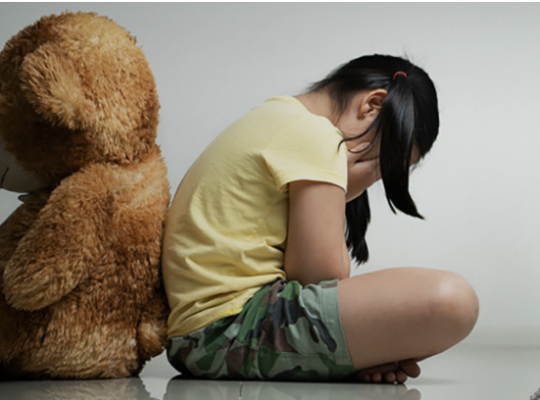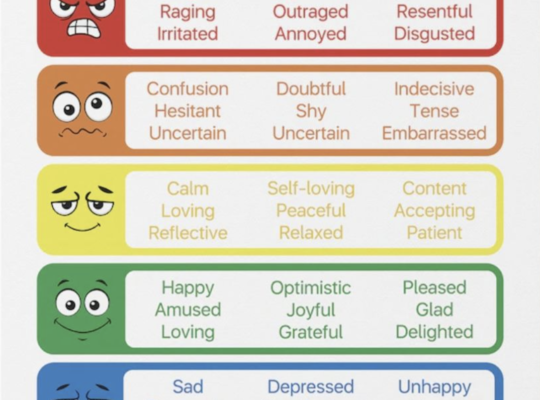
We often think of burnout as something that only affects adults working long hours in demanding jobs, but what if I told you that burnout can strike much earlier? In fact, Gen Z—the cohort of teens and young adults who are navigating life in a hyper-connected world—are experiencing burnout at an alarming rate. This isn’t just about feeling tired after a long day; it’s about a persistent mental, emotional, and physical exhaustion that stems from juggling academic pressures, social expectations, and the demands of the digital world. It’s time to take a closer look at why this happens, how it affects their mental health, and how we can help prevent it.
The Silent Mental Load of Gen Z
Gen Z is facing unique challenges that past generations didn’t have to contend with. While millennials were just getting accustomed to the digital world, Gen Z has grown up with it. This constant connection to social media, the pressure to perform academically and socially, and the need to constantly be “on” takes a serious toll. It’s a mental load that often goes unnoticed, but it can wear teens down to the point of burnout.
For teenagers, burnout is more than just academic stress. It’s the cumulative effect of everything. The unrelenting pressure to perform well in school, the looming fear of an uncertain future, the demands of part-time jobs, extracurricular activities, and the expectations of family and society—all of these create a heavy burden. Add to that the emotional exhaustion of managing relationships and constantly being “on” in the digital world, and it’s no wonder that burnout has become a pervasive issue.
Understanding Burnout: More Than Just Tiredness
Burnout, according to psychologist Christina Maslach, involves three core components: emotional exhaustion, depersonalization (feeling detached from others), and a reduced sense of personal accomplishment. While this is typically used to describe adults in high-stress careers, the same elements can apply to teens.
Emotional exhaustion manifests as feeling drained by the constant demands of school, social life, and family. For Gen Z, these emotional resources are often stretched thin, especially when teens are constantly bombarded by the pressures of social media.
Depersonalization in teens can look like withdrawing from relationships, not caring about academic success, or feeling like everything they do is never enough. In the age of Instagram and TikTok, teens often feel the need to maintain a curated, “perfect” life online, which can be exhausting and isolating when reality doesn’t measure up to the image they present.
Finally, a reduced sense of personal accomplishment comes when teens start to feel like their efforts—whether in school, relationships, or extracurricular activities—aren’t leading to meaningful outcomes. With everything feeling like an endless loop of tasks and expectations, they can become disillusioned and lose motivation.
The Psychological Toll: Anxiety, Depression, and More
What’s the result of all this burnout? Unfortunately, it’s not just feeling tired. The mental load Gen Z carries can lead to serious psychological effects, including increased rates of anxiety, depression, and other mental health struggles. According to research by Twenge et al. (2019), anxiety and depression among teens have been on the rise in recent years, correlating with an increase in screen time and the pressure to succeed.
Sleep disturbances are another common symptom. Teens are staying up later, scrolling through their phones or working on school assignments, which disrupts their circadian rhythms and contributes to chronic fatigue. The lack of proper rest affects mood regulation, making it harder to deal with the daily stressors that come with balancing school, work, and personal life.
In addition, cognitive overload is a big factor. Gen Z is known for multitasking—keeping up with homework while responding to texts, checking social media, or watching videos. However, research by Kirschner & Karpinski (2010) suggests that multitasking can actually impair cognitive function and reduce academic performance. The constant switching of tasks and focusing on too many things at once takes a toll on their ability to concentrate, retain information, and think critically. This cognitive overload is not only mentally exhausting but also reduces their sense of accomplishment, fueling the cycle of burnout.
Signs of Burnout: Recognizing the Symptoms in Teens
The tough part is that burnout can often go unnoticed, especially in teenagers who might feel like they have to keep up appearances. But there are signs to look out for:
- Physical signs: Chronic fatigue, frequent illnesses, headaches, and stomach issues.
- Emotional signs: Anxiety, irritability, feelings of hopelessness, or emotional numbness.
- Behavioral signs: Withdrawal from social interactions, a sudden drop in academic performance, procrastination, and disengagement from activities they once enjoyed.
If you’re a parent, teacher, or counselor, being aware of these signs is the first step toward helping a teenager before burnout becomes a serious issue. Teens may not always know how to express what they’re feeling, so creating a safe, open space for them to talk about their emotions is crucial.
Coping Strategies: Manage Stress and Prevent Burnout
While burnout can feel overwhelming, there are several strategies that teens can use to cope with stress and prevent burnout from taking over their lives:
- Time Management and Prioritization: It’s important for teens to learn how to manage their time effectively. Setting realistic goals, breaking down tasks into smaller, manageable steps, and prioritizing what’s truly important can help alleviate the pressure.
- Mindfulness and Relaxation Techniques: Practices like mindfulness, yoga, or deep breathing can help teens reduce stress and bring their focus back to the present moment. Studies have shown that mindfulness can improve emotional regulation and decrease symptoms of anxiety and depression (Goyal et al., 2014).
- Building Strong Social Support Networks: Encouraging teens to talk to friends, family members, or a counselor about their feelings can provide emotional support and reduce isolation. Having a strong support network is one of the best ways to combat the emotional toll of burnout.
- Digital Detox: Setting boundaries around screen time—whether it’s limiting social media use or taking breaks from digital devices—can help reduce the constant pressure to perform and compare. A digital detox allows teens to recharge, focus on their mental health, and connect with the real world.
- Sleep Hygiene: Proper sleep is essential for mental health. Encouraging teens to develop good sleep habits, like sticking to a regular bedtime and avoiding screens before bed, can significantly improve their overall well-being.
The Role of Schools and Parents
Finally, schools and parents play a vital role in preventing burnout in teens. Schools should foster environments that support mental health by reducing academic pressures, offering counseling services, and promoting well-being. Parents, on the other hand, should model healthy coping strategies, provide emotional support, and help their teens set realistic goals.
Together, we can help Gen Z navigate their mental load, so they don’t burn out before they even have the chance to truly live.
Wrapping up:
Burnout in teenagers may seem like a new or unusual problem, but it’s something that needs to be addressed if we want to protect the mental health of the next generation. By acknowledging the pressures Gen Z faces—academic, social, digital, and emotional—we can provide the tools and support they need to manage their stress and avoid the devastating effects of burnout. Let’s work together to help them thrive, not just survive.
References:
- Goyal, M., et al. (2014). Meditation Programs for Psychological Stress and Well-being: A Systematic Review and Meta-analysis. JAMA Internal Medicine.
- Kirschner, P. A., & Karpinski, A. C. (2010). Facebook® and Academic Performance. Computers in Human Behavior.
- Maslach, C. (1982). Burnout: The Cost of Caring.
- Twenge, J. M., et al. (2019). The Decline in Adult Activities Among U.S. Adolescents, 1976–2016. Child Development.






